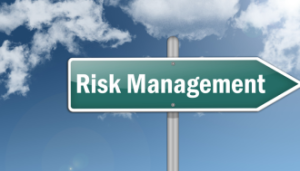A User Guide:
1. Who is responsible
In England and Wales, if you’re an employer, owner, landlord or occupier of business or other non-domestic premises, you’re responsible for fire safety and are known as the ‘responsible person’.
The ‘responsible person’
As the ‘responsible person’ you must:
- carry out and regularly review a fire risk assessment of the premises
- tell staff or their representatives about the risks you’ve identified
- put in place, and maintain, appropriate fire safety measures
- plan for an emergency
- provide staff information, fire safety instruction and training
Non-domestic premises

Non-domestic premises are:
- all workplaces and commercial premises
- all premises the public have access to
2. Fire risk assessments
As the ‘responsible person’ you must carry out and regularly review a fire risk assessment of the premises. This will identify what you need to do to prevent fire and keep people safe.
You must keep a written record of your fire risk assessment if your business has 5 or more people.
Carrying out the assessment
- Identify the fire hazards.
- Identify people at risk.
- Evaluate, remove or reduce the risks.
- Record your findings, prepare an emergency plan and provide training.
- Review and update the fire risk assessment regularly.
You’ll need to consider:
- emergency routes and exits
- fire detection and warning systems
- fire fighting equipment
- the removal or safe storage of dangerous substances
- an emergency fire evacuation plan
- the needs of vulnerable people, eg the elderly, young children or those with disabilities
- providing information to employees and other people on the premises
- staff fire safety training
Help with the assessment
You can do the fire risk assessment yourself with the help of standard fire safety advice documents.
You’ll need to appoint a ‘competent person’ to help, eg a professional risk assessor, if you don’t have the expertise or time to do the fire risk assessment yourself.
If you’re not sure if your risk assessment has been carried out properly your local fire and rescue authority might be able to give you advice although they can’t carry out risk assessments for you.
3. Fire safety advice documents
Read the government’s guidance on:
4. Fire safety and evacuation plans
Your plan must show how you have:
- a clear passageway to all escape routes
- clearly marked escape routes that are as short and direct as possible
- enough exits and routes for all people to escape
- emergency doors that open easily
- emergency lighting where needed
- training for all employees to know and use the escape routes
- a safe meeting point for staff
People with mobility needs
You should also make special arrangements for people with mobility needs, eg make sure there are people to help wheelchair users get out of the building in the event of a fire.
5. Fire safety equipment, drills and training
Fire detection and warning systems
You must have a fire-detection and warning system. You may need different types of detectors, depending on the type of building and work carried out in the building.
Fire fighting equipment
The types of equipment you need depend on your business premises. You’ll need to have any equipment properly installed, tested and maintained and train your staff to use them if necessary.
Maintenance and testing
You must carry out regular checks to make sure that:
- all fire alarm systems are working
- the emergency lighting is working
- you record any faults in systems and equipment
- all escape routes are clear and the floor is in a good state
- all fire escapes can be opened easily
- automatic fire doors close correctly
- fire exit signs are in the right place
Fire drills and training
You need to train new staff when they start work and tell all employees about any new fire risks.
You should carry out at least 1 fire drill per year and record the results. You must keep the results as part of your fire safety and evacuation plan.
6. Enforcement, appeals and penalties
Your local fire and rescue authority visits premises to check the fire risk assessment and fire prevention measures are appropriate. Fire safety officers should help you understand the rules and comply with them.
They can also take action if they think your fire safety measures aren’t adequate. For example, they might issue an informal notice suggesting safety measures.
They could also give you a formal fire safety notice. They will tell you what to do to fix the problems described in the notice.
Alterations notice
You could get an alterations notice if your premises have high safety risks or will have high safety risks if the use of the premises changes.
Enforcement notice
You could get an enforcement notice if the fire and rescue authority finds a serious risk that’s not being managed. It will say what improvements are needed by when.
Prohibition notice
These take effect immediately if the fire and rescue authority thinks that the fire risk is so great that access to your premises needs to be prohibited or restricted.
Appeals
You may be able to arrange an informal review from your fire and rescue authority if you disagree with the decision to issue a fire safety notice.
You can appeal to your local magistrates’ court within 21 days of receiving a notice.
In certain circumstances, you and the fire and rescue authority can ask for a ‘determination’ from the Communities Secretary to resolve a dispute.
Penalties
You can be prosecuted for not following fire safety regulations. You could get a fine or go to prison if you’re convicted.
Minor penalties can be up to £5,000. Major penalties can have unlimited fines and up to 2 years in prison.
